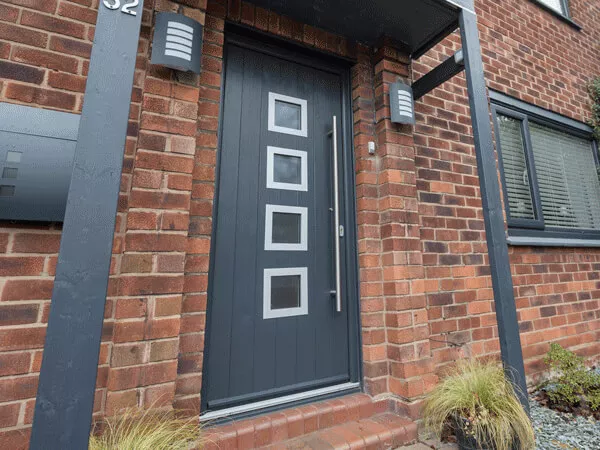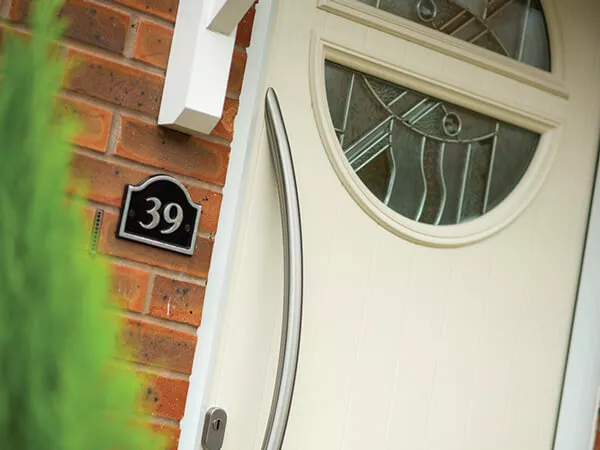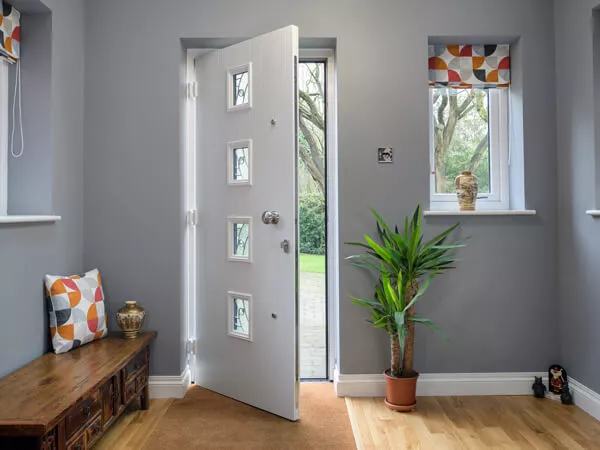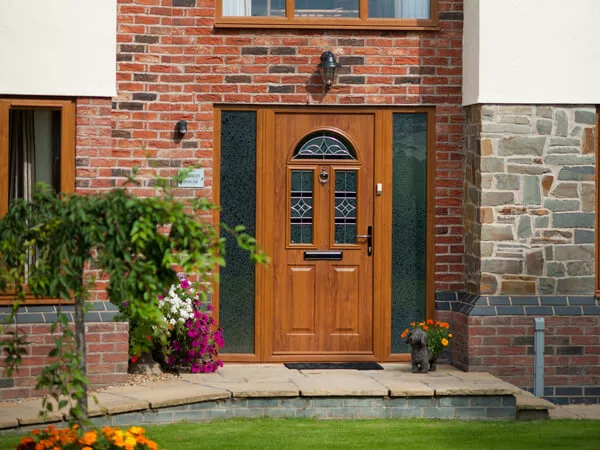How to Measure a Door: Avoid Returns with Accurate mm
It’s important to get the measuring of a door exactly right for the prevention of draughts and sticking and to ensure a seamless fit. You can’t go wrong with doing it if you abide by our guide, in which you’ll learn how to conduct precise measuring in millimetres for current frames and brand-new door sets. There are also insights on gaps, floor coverings and when it’s best to go for a tailored door.
- Does the door or frame need measuring?
Ahead of fitting most replacement doors, in case of any shrinking or swelling to the present door, you should measure the actual frame so that you get the true opening and correct sizing. If there isn’t a frame, go brick-to-brick with your tape measure and subtract the frame size from the relevant measurement. - What door gaps should be left?
There needs to be several small and even gaps around the door edges so that no catching occurs when opening and closing a new door. No scuffing should take place with gaps of about 3mm at the top and sides and 9mm at the bottom. An element of lipping exists in most new types of doors to allow a fitter to plane or trim a door and get the necessary clearance. - What are the standard sizes of UK internal doors?
Recognise that manufacturers tend to follow a series of common door sizes if wanting to discover how to measure a door. 1981 x 762 x 35 mm (approximately 6’6” × 2’6”) is the conventional door size, but not always. Here are some other UK internal door sizes you may come across:- 1981 × 610 × 35 mm (6’6” × 2’0”)
- 1981 × 686 × 35 mm (6’6” × 2’3”)
- 1981 × 838 × 35 mm (6’6” × 2’9”)
- 2040 × 826 × 40 mm (metric size)
Thickness can vary as well, such as with fire-rated doors (FD30), which surpass a standard internal door’s thickness by roughly 9 mm (44 mm as opposed to 35 mm).
Refrain from ordering until you have captured the size closest to the standard and know the trimming options.
- With no frame, how do you measure?
If there’s no frame to work with, measuring doors needs you to directly measure the brickwork opening. The width can be gathered by going brick to brick in a straight line across the top, middle and bottom of the opening and noting the smallest measurements. To get the height, go brick to brick in a straight line once again, but from the left, centre and right sides of the opening, logging the small measurements. These dimensions will enable you to work out the necessary door set size, assuming you’ve deducted the specified allowance. An undersized opening will cause a range of problems, so it’s safer to go oversized as at least then an installer can pack an undersized frame, if needed.
Request Your Free Door Quote
Simply fill in your details for your free, no obligation quotation
Measuring openings with frames (internal or external door replacements)
On measuring for a doorset in the instance of upgrading an internal or external door, standard practice is to do so with the door frame in place.
You can swear by our knowledge of how to measure a door frame when we tell you to take measurements from inside for a comfortable fit into any existing frame structure.
Our numbered steps will see that you don’t put a foot wrong with this bit:
- Measuring the distance between the inside edges of the frame at the top, middle and bottom will give you the width.
- Ascertain the door height with a measurement at different points from the top frame to the floor (or threshold, if there is one) – the smallest measurement is the one to use.
- You mustn’t neglect to measure the depth of the door frame and door rebate (where the door sits in the frame) to be assured of precise alignment.
- So that it hangs right, be alert to the door opening inwardly or outwardly and being left- or right-handed.
- Last thing. Ensure the frame is exactly square, which a diagonal measurement from corner to corner will tell you.
Door width (inside the frame)
Jamb in door terminology refers to the vertical part of a door frame that forms the side of the doorway.
- From jamb to jamb is how to measure the inside width of a door frame.
- It won’t surprise you by now to know to do this from the top, middle and bottom of the frame.
- The widest reading is what to quote when ordering a door replacement, which will reduce the chance of any trimming being necessary.

Door height (finished floor to underside of head)
For how to measure a door frame for height entails some separate steps:
- Measure from the floor (or threshold) to the door frame’s underside.
- Do it from the left side, centre and right side of the doorway.
- The tallest measurement will confirm the required height and prevent the door and any threshold or carpet clashing.

Door thickness & frame rebate
Measuring doors also involves determining a door’s thickness and its rebate and there’s nothing complicated about it.
- Locate where the edge of the current door is (you want the side that sits inside the frame when it’s closed) and gather the thickness with a ruler from one face of the door to the other.
- A measurement of the rebate’s width and depth is essential.
- For a door that fits flush when closed, the new door’s thickness must supplement the frame rebate.

Equipment, preparation and other nuggets of info
Any risk of a new door not fitting properly can be averted if you use the appropriate equipment and do the relevant prep work. A sturdy tape measure, along with a pencil and paper are all you need.
There should be no obstructions in the way and remove door stops and trims before doing anything.
Measurements in metric millimetres are a must if seeking precision and it’s always the smallest measurements for width, height and depth that are most crucial. Check over your measurements a couple of times before ordering.
At this point, we’d also suggest getting familiar with the best door colours.

Clearances, trimming and floor coverings
No piece on how to measure a door is worth its salt if it doesn’t say to make considerations for clearances around edges.
With a clearance of around 3mm at the top and side and 9mm at the bottom, door operation should be simple enough and leaves space in case of any future contraction or expansion.
Read the manufacturer guidelines to become au fait with the trimming limits so that your new door works and fits as hoped.
Mapping measurements to UK sizes (and when to choose the bespoke option)
Your measurements will hopefully match up to common standard internal door sizes in the UK, including widths of 540mm to 838mm, heights of 1981mm or 2040mm and thicknesses of 35 to 44mm.
Gauge if a standard door will neatly integrate by calculating expected gaps; 2-3mm at the top, 2mm each side and 8-10mm at the bottom for clearance. If trimming can accomplish these clearances, a standard door will be fine.
Something tailored is advised if an opening is greatly bigger than standard dimensions, irregular or has a non-standard thickness.
Eden Windows is well-accustomed to measuring a door if you’d rather leave it to the professionals and we wouldn’t expect you to do it anyway after placing a door order with us. It’s our job and we’ll do it with our usual efficiency so that your replacement door looks and works a treat.
Request your free quote today!
Simply fill in your details for your free, no obligation quotation, and click "Get Quote"